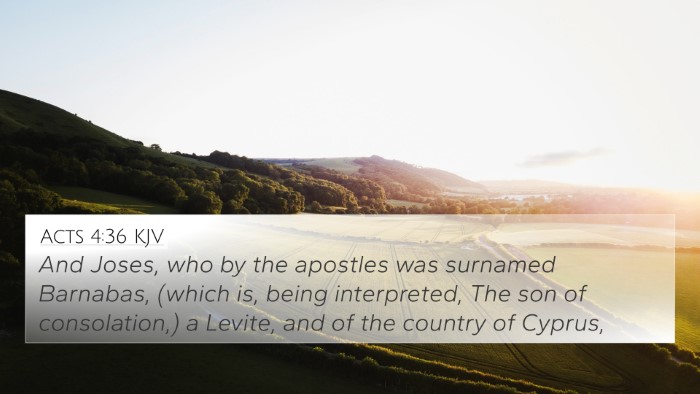Understanding Galatians 2:1
Bible Verse: Galatians 2:1 - "Then after fourteen years I went up again to Jerusalem with Barnabas, and took Titus with me also."
Verse Meaning and Interpretation
The Apostle Paul recounts his journey to Jerusalem after a significant period of fourteen years. This verse provides crucial context for understanding Paul's ministry and the establishment of early Christianity.
Contextual Insights:
- Historical Context: Paul’s journey to Jerusalem is pivotal, as it reflects his commitment to the early Church and his relationship with key figures such as Barnabas and Titus.
- Theological Significance: This moment emphasizes the unity and collaboration among the apostles and the early Church, which is foundational for understanding Christian doctrines.
Commentary Insights
Matthew Henry's Commentary: Henry notes that Paul's visit to Jerusalem was not just for personal reasons but was crucial for the confirmation of his ministry. It serves as a testament to Paul's authority as an apostle and his commitment to the Gospel.
Albert Barnes's Commentary: Barnes emphasizes the importance of Barnabas and Titus accompanying Paul. Barnabas represents encouraging leadership within the church, while Titus symbolizes the acceptance of Gentile believers, highlighting the inclusivity of the Christian message.
Adam Clarke's Commentary: Clarke notes that the fourteen years may signify a period of preparation and maturation in Paul’s ministry, illustrating that the work of God often requires time for development before one is ready to take on significant tasks.
Thematic Bible Verse Connections
Galatians 2:1 connects strongly with several other scriptures, offering a canvas of inter-Biblical dialogue. Below are key cross-references:
- Acts 15:2: Paul and Barnabas's journey to Jerusalem is further documented, establishing the context of their mission.
- Galatians 1:18: This verse highlights Paul's previous visit to Jerusalem, offering insights into the timeline of his apostleship.
- Acts 11:30: The collection for the saints in Jerusalem demonstrates the unity and mission of the early Church.
- Romans 1:16: Paul asserts the universality of the Gospel, indicative of his relationship with Gentile believers like Titus.
- 2 Corinthians 8:23: Paul mentions Titus as a fellow partner, showcasing their collective ministry efforts.
- Philippians 1:5: This emphasizes the partnership in the Gospel that underlines the context of Paul's ministry.
- 1 Thessalonians 2:4: This verse exhibits Paul’s commitment to preaching the Gospel authentically, relevant to his testimony in Galatians.
Cross-Referencing Insights
Utilizing cross-references can deepen our understanding of scripture. Here are tools and methodologies for enhanced Bible study:
- Bible Concordance: A tool for locating verses based on keywords, helping identify connections quickly.
- Bible Cross-Reference Guide: Useful for studying themes or topics across different books of the Bible.
- Cross-Referencing Bible Study: A methodology that encourages comparing scriptures for a broader understanding of Biblical themes.
- Bible Chain References: A way to follow a thematic trail through linked verses to grasp a more comprehensive view of the subject matter.
Applying the Insights
To apply these insights meaningfully, consider exploring the following aspects:
- How to Find Cross-References in the Bible: Start by using a concordance or digital Bible study tools.
- Identifying Connections Between the Old and New Testament: Use thematic studies to see how the teachings of the Old Testament relate to the New Testament.
- Detailed Cross-reference Between Gospels: Compare the accounts of events recorded in different Gospel writings to discern unique perspectives.
- Comparative Study of Pauline Epistles: Analyze the letters of Paul for themes and teachings that recur, illuminating his theological framework.
Conclusion
Galatians 2:1 is not just a historical recounting, but a vital link in understanding the narrative of the early Church. By utilizing interconnected scripture and tools for cross-referencing, we can gain profound insights into the evolving faith of the apostles and the unfolding of God’s plan through their lives.




















